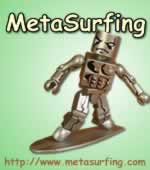Views of an automobile (top) and of a human brain (bottom)
from the updatable 3D holographic display developed at The University of Arizona College of Optical Sciences in collaboration with Nitto Denko Technical Corp., Oceanside, Calif. The 3D images were recorded on a 4-inch by 4-inch photorefractive polymer device. (Credit: University of Arizona College of Optical Sciences/Nitto Denko Technical Corp.)
University of Arizona optical scientists have broken a technological barrier by making three-dimensional holographic displays that can be erased and rewritten in a matter of minutes.
The holographic displays – which are viewed without special eyewear – are the first updatable three-dimensional displays with memory ever to be developed, making them ideal tools for medical, industrial and military applications that require "situational awareness."
"This is a new type of device, nothing like the tiny hologram of a dove on your credit card," UA optical sciences professor Nasser Peyghambarian said. "The hologram on your credit card is printed permanently. You cannot erase the image and replace it with an entirely new three-dimensional picture."
Dynamic hologram displays could be made into devices that help surgeons track progress during lengthy and complex brain surgeries, show airline or fighter pilots any hazards within their entire surrounding airspace, or give emergency response teams nearly real-time views of fast-changing flood situations or traffic problems, for example.
Their device basically consists of a special plastic film sandwiched between two pieces of glass, each coated with a transparent electrode. The images are "written" into the light-sensitive plastic, called a photorefractive polymer, using laser beams and an externally applied electric field. The scientists take pictures of an object or scene from many two-dimensional perspectives as they scan their object, and the holographic display assembles the two-dimensional perspectives into a three-dimensional picture.
The 4-inch-by-4-inch prototype display that Peyghambarian, Tay and their colleagues created now comes only in red, but the researchers believe much larger displays in full color could be developed. They next will make 1-foot-by-1-foot displays, then 3-foot-by-3-foot displays.
"We use highly efficient, low-cost recording materials capable of very large sizes, which is very important for life-size, realistic 3-D displays," Peyghambarian said. "We can record complete scenes or objects within three minutes and can store them for three hours."
More.

No comments:
Post a Comment